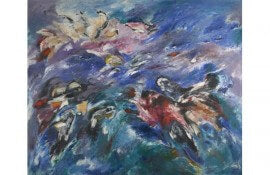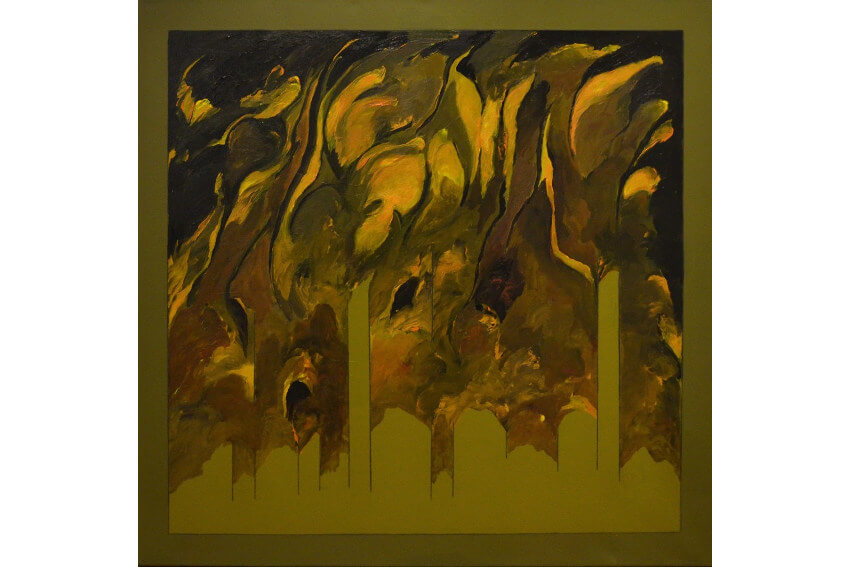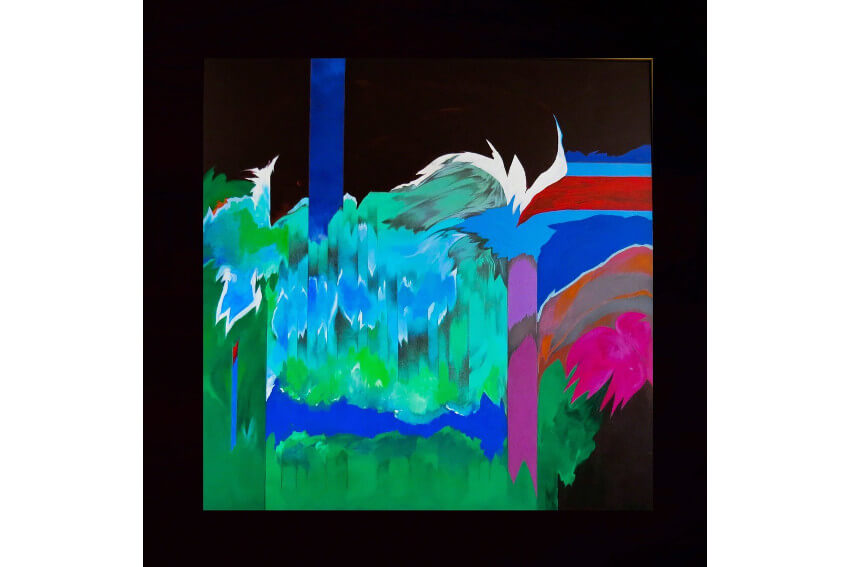
Sonia Gechtoff - The End of an Era in the Male-Dominated Abstract Expressionism
Throughout her life, Sonia Gechtoff heard the same questions again and again. Every interviewer asked her about her years as a pioneering, California Abstract Expressionist painter, and one of just a few females to become widely acknowledged within that movement. Gechtoff arrived in San Francisco just as the conversation amongst Bay Area artists about the relative values of abstraction and figuration was at its most divisive and fertile. Her work stood out immediately. She was the first artist to be given a solo show at the Ferus Gallery in Los Angeles. And she was also a major presence on the social scene. She associated with many of the most important west coast painters, musicians and poets of the 1950s and 60s. Her mother even ran a small gallery across the street from Six Gallery, where Allen Ginsberg debuted his groundbreaking work, “Howl.” But Gechtoff was also a prolific and imaginative artist who continued evolving as an artist until the day she died, a couple of weeks ago, at age 91. Undeniably, she was a great source for anecdotes about a mythical time. But the story of the rest of her work is what still needs to be told.
In Search of Expansiveness
The best word to describe everything Gechtoff accomplished as an artist is “expansion.” Her earliest memories of making art were from age six, when her father, also an artist, set up a canvas beside his own, handed her paints and brushes and told her to paint. From there, she expanded, excelling in high school art classes. She earned a scholarship to study art at university. Looking at her resume, it seems she attended the Pennsylvania Academy of the Fine Arts. But when she went there, it was a technical design college. She chose a technical art education, which would let her teach, on the advice of her mother, who feared she would end up poor like her father. Gechtoff resisted at first, but in retrospect, she realized that by forcing her out of her comfort zone, that technical education expanded her skills. She even credited it with inspiring the large body of pencil “hair drawings” she later created.
After college, Gechtoff longed to expand geographically. She considered moving to New York, but the high prices of that city made her fear having no time to paint. A friend told her about the exciting painting that was happening in San Francisco, which was considerably less expensive, so Gechtoff headed west. The vibe in the Bay Area when she arrived was influenced by the lessons of Clyfford Still, who had been teaching there for years. His philosophy focused on painting for its own sake. Coming from a background that emphasized image specificity, Gechtoff was liberated by the idea of just letting the paint find its own way. She embraced the technique of applying paint in thick layers with a palette knife, started painting giant-sized canvases, and began using bold, physical gestures. She let the medium collaborate with her body and her subconscious in whatever way it wanted, and in the process developed an expressive, emotive, abstract style.
 Sonia Gechtoff - Kayla's Eyes 2, 2014, Acrylic on Canvas, 36 × 36 in, 91.4 × 91.4 cm, © 2018 Sonia Gechtoff
Sonia Gechtoff - Kayla's Eyes 2, 2014, Acrylic on Canvas, 36 × 36 in, 91.4 × 91.4 cm, © 2018 Sonia Gechtoff
Poetry in Motion
Unlike many of her Abstract Expressionist peers, Gechtoff did not completely abandon the image. Nor did she abandon her own narrative voice. Both in her early abstract canvasses, as well as in the paintings she went on to make later, a strong sense of the figure remains. In other words, unlike the Abstract Expressionist “all over” painters who were rejecting traditional composition as a way of expressing a subject, Gechtoff maintained a traditional sense of the decorative, expressive power of composition. Her work incorporates centralized compositional elements, which suggest the presence of a figurative subject, like a story is being told.
Early on, the central figures grow out of the middle of her images, in a circular formation. Gechtoff often said these early works were self-portraits, and suggested that this was her attempt to express a metaphorical representation of “the female mythic figure.” But besides the poetic narrative Gechtoff infused into her work, she was also a master of conveying abstract elements, which gave her paintings their power. She employed lyrical, sweeping, painterly marks, confident impasto layers, and dramatic color relationships, which convey deep emotion. And of course her willingness and ability to work on a large-scale overwhelmed viewers with feeling.
 Sonia Gechtoff - Garden, Wave, and Waterfall, 2001, Acrylic on Canvas, 60 × 60 in, 152.4 × 152.4 cm, © 2018 Sonia Gechtoff
Sonia Gechtoff - Garden, Wave, and Waterfall, 2001, Acrylic on Canvas, 60 × 60 in, 152.4 × 152.4 cm, © 2018 Sonia Gechtoff
A Rising Exuberance
In the 1970s and 80s, Gechtoff abandoned Abstract Expressionist techniques and gravitated toward more flattened surfaces, and harder edges. Her compositions took on a more architectonic quality. These paintings convey a sense of revelation. It is as if mysteries were beginning to form in her early work, and as time rolled on secrets were gradually being revealed. Then in the 1990s, her forms started to become more jagged. She adopted the physical characteristics of forces of nature, such as fire, water, and wind. This was the distinctive style she maintained for the rest of her life. Though still abstract, her last paintings are direct, dramatic, simplified, and highly communicative.
Two years ago when the Women of Abstract Expressionism exhibition debuted at the Denver Art Museum, Gechtoff was one of only three living painters included in that show. She was also a contrarian when it came to the version of history that show was working to dispel. Its basic narrative, which is undeniably true, was that female Abstract Expressionist painters were largely diminished by their male colleagues, and by dealers and curators. But Gechtoff pointed out that was only the case in New York. That, she explained, was where all the money was being made, so it was the most competitive. But Abstract Expressionism was a nationwide movement. Its full story has never been told. When Gechtoff was in San Francisco, she described it as a meritocracy. Good painters were rewarded, regardless of their genetic characteristics. In that spirit, hopefully Gechtoff will be afforded the respect of having her legacy not only be written in terms of one art movement. Hopefully her whole life and her dynamic, prolific career will be regarded in its full measure.
 Sonia Gechtoff - Troika, 1992, Oil on Canvas, 54 × 54 in, 137.2 × 137.2 cm, © 2018 Sonia Gechtoff
Sonia Gechtoff - Troika, 1992, Oil on Canvas, 54 × 54 in, 137.2 × 137.2 cm, © 2018 Sonia Gechtoff
Featured image: Sonia Gechtoff - The Beginning, 1960, Oil paint on canvas, 69 × 83 in, 175.3 × 210.8 cm, © 2018 Sonia Gechtoff
All images used for illustrative purposes only
By Phillip Barcio






